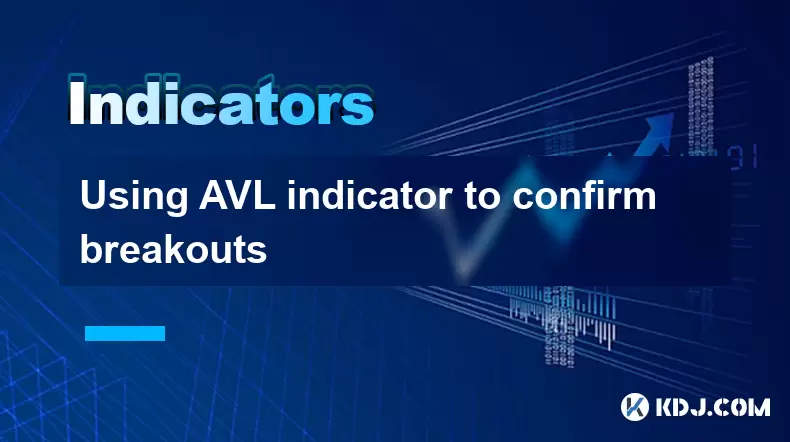-
 Bitcoin
Bitcoin $118300
0.21% -
 Ethereum
Ethereum $3748
5.28% -
 XRP
XRP $3.514
2.29% -
 Tether USDt
Tether USDt $1.000
-0.01% -
 BNB
BNB $747.8
2.18% -
 Solana
Solana $181.1
2.16% -
 USDC
USDC $0.9999
0.00% -
 Dogecoin
Dogecoin $0.2642
9.21% -
 Cardano
Cardano $0.8606
3.96% -
 TRON
TRON $0.3173
-0.98% -
 Hyperliquid
Hyperliquid $46.70
4.60% -
 Stellar
Stellar $0.4730
1.76% -
 Sui
Sui $3.926
3.48% -
 Chainlink
Chainlink $19.27
5.24% -
 Hedera
Hedera $0.2780
4.02% -
 Bitcoin Cash
Bitcoin Cash $549.4
8.37% -
 Avalanche
Avalanche $25.06
3.31% -
 Shiba Inu
Shiba Inu $0.00001538
4.36% -
 Litecoin
Litecoin $117.0
12.63% -
 UNUS SED LEO
UNUS SED LEO $8.998
0.08% -
 Toncoin
Toncoin $3.279
3.00% -
 Polkadot
Polkadot $4.490
4.46% -
 Uniswap
Uniswap $10.62
5.37% -
 Ethena USDe
Ethena USDe $1.001
-0.01% -
 Monero
Monero $326.5
0.32% -
 Pepe
Pepe $0.00001417
8.12% -
 Bitget Token
Bitget Token $4.984
2.01% -
 Dai
Dai $0.9999
-0.01% -
 Aave
Aave $326.3
3.09% -
 Bittensor
Bittensor $427.7
3.65%
Using AVL indicator to confirm breakouts
The AVL indicator helps confirm crypto breakouts by showing if price moves are supported by strong buying or selling volume.
Jul 20, 2025 at 04:15 pm

What is the AVL Indicator?
The AVL indicator, short for Accumulation Volume Line, is a technical analysis tool used primarily in cryptocurrency trading to gauge buying and selling pressure. Unlike simple volume indicators, the AVL indicator incorporates both price movement and volume to provide more nuanced insights into market behavior. When the price rises along with increasing AVL values, it signals strong accumulation by buyers. Conversely, if prices rise but AVL stagnates or declines, it may suggest a lack of conviction among buyers.
In the context of breakout confirmation, the AVL indicator becomes especially valuable. Traders often look for divergences between price action and AVL levels to anticipate false breakouts or confirm genuine ones. This makes the AVL indicator a powerful ally when navigating the volatile world of cryptocurrencies.
How Does the AVL Indicator Work in Cryptocurrency Trading?
The AVL indicator works by adding volume on up days and subtracting volume on down days from a cumulative total. This creates a line that fluctuates based on whether the asset is being accumulated or distributed. In crypto markets, where volume can be highly erratic, this indicator helps filter out noise and focus on meaningful shifts in sentiment.
For example, during a consolidation phase, if the AVL line begins to rise while the price remains flat, it could indicate that smart money is accumulating before a potential breakout. Similarly, if a cryptocurrency breaks above a resistance level but the AVL line fails to make a corresponding move, the breakout might not be supported by real demand and could reverse quickly.
Using AVL Indicator to Confirm Breakouts: Step-by-Step Guide
To effectively use the AVL indicator for breakout confirmation in crypto trading, follow these steps:
- Identify a Key Resistance or Support Level: Look for areas where the price has previously struggled to move past. These zones are ideal for monitoring potential breakouts.
- Overlay the AVL Indicator on Your Chart: Most charting platforms like TradingView allow you to add the AVL indicator easily.
- Observe Price Behavior Near the Key Level: As the price approaches the level, check how the AVL line reacts.
- Look for Confirmation Signals: A valid breakout typically coincides with a rising AVL line. If the price moves beyond the level and the AVL line follows suit, it suggests institutional or large-volume participation.
- Avoid False Breakouts: If the price surges past a key level but the AVL line remains flat or drops, it could be a trap set by market makers or whales.
This method allows traders to filter out weaker breakouts and focus on those with higher probability outcomes.
Interpreting AVL Divergence During Breakout Attempts
One of the most effective uses of the AVL indicator is identifying divergence between price and volume momentum. In breakout scenarios, divergence can be a red flag indicating that the move lacks strength.
For instance, suppose Bitcoin attempts to break above a major resistance zone at $30,000. The price briefly spikes past this level but then retraces back into the range. Meanwhile, the AVL line does not reach a new high during this push. This bearish divergence implies that although the price moved up, the underlying volume was insufficient to sustain the breakout.
On the flip side, bullish divergence occurs when the price makes a lower low but the AVL line makes a higher low. This suggests that despite downward price movement, buying pressure is building — potentially signaling an imminent bullish breakout.
Integrating AVL with Other Indicators for Stronger Confirmation
While the AVL indicator is powerful on its own, combining it with other tools can significantly enhance its reliability. For example, pairing it with moving averages or Bollinger Bands can help identify high-probability breakout zones.
Traders often use a 20-period moving average as a dynamic support or resistance level. If the price breaks above this average and the AVL line confirms the move by rising sharply, it strengthens the case for entering a long position. Similarly, using RSI alongside AVL can help avoid overbought or oversold traps during breakout attempts.
Another common strategy involves watching for a breakout candlestick pattern (like a bullish engulfing or breakout gap) and confirming its legitimacy through the AVL line’s behavior. If the candle closes strongly and the AVL line jumps upward, the chances of a sustained move increase dramatically.
Practical Example: Confirming a Breakout in Ethereum
Let’s take a practical scenario involving Ethereum (ETH) trading. Suppose ETH has been consolidating in a tight range between $1,800 and $1,900 for several days. Suddenly, a surge in buying pressure pushes the price above $1,900 with a strong bullish candle.
At this point, many traders might jump in expecting a continuation move. However, checking the AVL indicator reveals that while the price broke out, the AVL line barely moved and even dipped slightly during the breakout candle. This discrepancy raises suspicion about the authenticity of the breakout.
Minutes later, the price collapses back below $1,900, trapping impulsive buyers who didn’t verify volume support. Had they checked the AVL signal, they might have avoided entering a losing trade.
Frequently Asked Questions
Q: Can the AVL indicator be used on all timeframes in crypto trading?
Yes, the AVL indicator is applicable across all timeframes. However, higher timeframes such as the 4-hour or daily charts tend to offer more reliable signals due to reduced volatility and noise compared to shorter intervals like 5-minute or 15-minute charts.
Q: Is the AVL indicator available on major trading platforms like Binance or TradingView?
Yes, the AVL indicator is available on most advanced charting platforms including TradingView, ThinkorSwim, and MetaTrader. While Binance's native interface doesn't include it directly, users can connect third-party tools or access it via external platforms.
Q: How does the AVL indicator differ from On-Balance Volume (OBV)?
Both AVL and OBV track volume flow, but their calculation methods differ. AVL adds volume on up days and subtracts it on down days, while OBV adds volume on up days and keeps the same value on down days. This makes AVL more sensitive to selling pressure than OBV.
Q: Should I rely solely on the AVL indicator for breakout trading in crypto?
No single indicator should be used in isolation. While the AVL indicator provides valuable insights into volume dynamics, combining it with price action analysis, moving averages, or candlestick patterns increases the accuracy of breakout confirmation.
Disclaimer:info@kdj.com
The information provided is not trading advice. kdj.com does not assume any responsibility for any investments made based on the information provided in this article. Cryptocurrencies are highly volatile and it is highly recommended that you invest with caution after thorough research!
If you believe that the content used on this website infringes your copyright, please contact us immediately (info@kdj.com) and we will delete it promptly.
- Iron Maiden: Music Legends Celebrate 50 Years with Royal Mint Coin
- 2025-07-21 00:30:13
- BlockDAG, TIA, LTC: Unveiling the Latest Crypto Buzz
- 2025-07-21 00:50:12
- Ethereum Layer-2 Meme Coins: Little Pepe's Big Leap?
- 2025-07-21 00:30:13
- MoonBull, Crypto, and BOME Gains: Riding the Meme Coin Wave to 100x?
- 2025-07-21 00:50:12
- Bitcoin, ETH, and the Trader Target: Decoding the Crypto Landscape
- 2025-07-21 01:10:14
- Solana's TVL Growth: Riding the Cryptocurrency Wave
- 2025-07-21 01:10:14
Related knowledge

Advanced RSI strategies for crypto
Jul 13,2025 at 11:01am
Understanding the Basics of RSI in Cryptocurrency TradingThe Relative Strength Index (RSI) is a momentum oscillator used to measure the speed and chan...

Crypto RSI for day trading
Jul 12,2025 at 11:14am
Understanding RSI in the Context of Cryptocurrency TradingThe Relative Strength Index (RSI) is a momentum oscillator used to measure the speed and cha...

Crypto RSI for scalping
Jul 12,2025 at 11:00pm
Understanding RSI in the Context of Crypto TradingThe Relative Strength Index (RSI) is a momentum oscillator widely used by traders to measure the spe...

What does an RSI of 30 mean in crypto
Jul 15,2025 at 07:07pm
Understanding RSI in Cryptocurrency TradingRelative Strength Index (RSI) is a momentum oscillator widely used in cryptocurrency trading to measure the...

What does an RSI of 70 mean in crypto
Jul 13,2025 at 06:07pm
Understanding the RSI Indicator in Cryptocurrency TradingThe Relative Strength Index (RSI) is a widely used technical analysis tool that helps traders...

Does RSI work in a bear market for crypto
Jul 16,2025 at 01:36pm
Understanding RSI in Cryptocurrency TradingThe Relative Strength Index (RSI) is a momentum oscillator used by traders to measure the speed and change ...

Advanced RSI strategies for crypto
Jul 13,2025 at 11:01am
Understanding the Basics of RSI in Cryptocurrency TradingThe Relative Strength Index (RSI) is a momentum oscillator used to measure the speed and chan...

Crypto RSI for day trading
Jul 12,2025 at 11:14am
Understanding RSI in the Context of Cryptocurrency TradingThe Relative Strength Index (RSI) is a momentum oscillator used to measure the speed and cha...

Crypto RSI for scalping
Jul 12,2025 at 11:00pm
Understanding RSI in the Context of Crypto TradingThe Relative Strength Index (RSI) is a momentum oscillator widely used by traders to measure the spe...

What does an RSI of 30 mean in crypto
Jul 15,2025 at 07:07pm
Understanding RSI in Cryptocurrency TradingRelative Strength Index (RSI) is a momentum oscillator widely used in cryptocurrency trading to measure the...

What does an RSI of 70 mean in crypto
Jul 13,2025 at 06:07pm
Understanding the RSI Indicator in Cryptocurrency TradingThe Relative Strength Index (RSI) is a widely used technical analysis tool that helps traders...

Does RSI work in a bear market for crypto
Jul 16,2025 at 01:36pm
Understanding RSI in Cryptocurrency TradingThe Relative Strength Index (RSI) is a momentum oscillator used by traders to measure the speed and change ...
See all articles

























































































